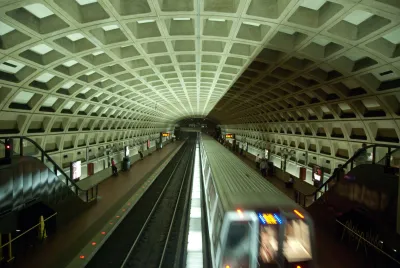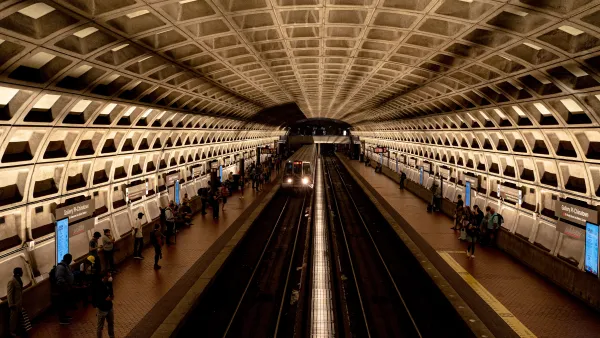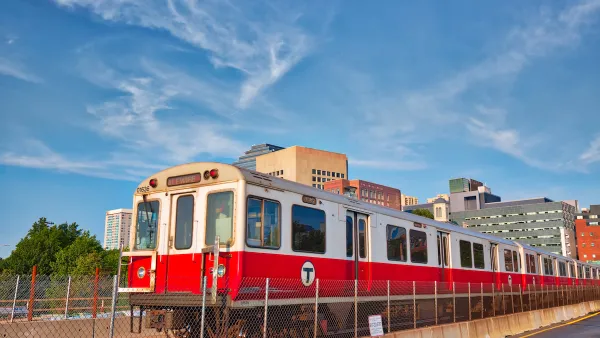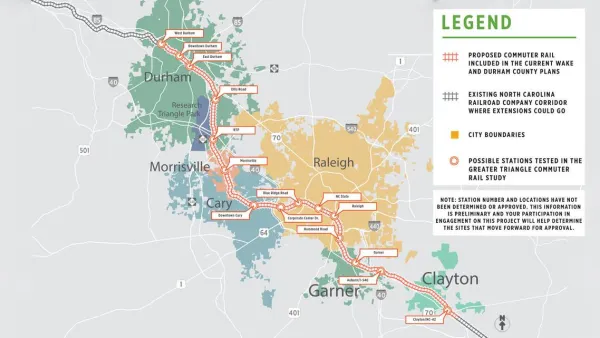The nation's second-largest transit system—and one of its newest—persists in the face of a host of challenges exacerbated by the pandemic.

Jake Blumgart interviews Zachary Schrag, author of The Great Society Subway, about the history of the ambitious Washington Metro system, which Blumgart calls "arguably the only comprehensive rapid transit system built in America after the rise of mass car ownership."
According to Schrag, officials at the time of its construction in the 1970s hoped it would provide a model for other cities. From its inception, the system had to compete with driving by providing ample amenities and attempting to serve both regional commuters and urban residents. Schrag notes that Metro committed to a more transit-oriented approach than other cities, making transit more convenient and raising the cost of driving and parking. Cities that build highways and parking alongside transit reduce the incentive to take public transportation and make the built environment less friendly to walking and biking.
Today, the system may struggle to accommodate new travel patterns. "What heavy rail is really, really good at is getting a lot of people to the same place at the same time," says Schrag. The challenge of providing service at off hours may only grow as work and mobility behaviors change.
Ultimately, says Schrag, massive infrastructure projects like Metro—or the Brooklyn Bridge, or the Erie Canal—require major investments in the future that Americans seem less willing to make.
FULL STORY: Lessons from Washington Metro, America’s Last Great Subway System

National Parks Layoffs Will Cause Communities to Lose Billions
Thousands of essential park workers were laid off this week, just before the busy spring break season.

Retro-silient?: America’s First “Eco-burb,” The Woodlands Turns 50
A master-planned community north of Houston offers lessons on green infrastructure and resilient design, but falls short of its founder’s lofty affordability and walkability goals.

Delivering for America Plan Will Downgrade Mail Service in at Least 49.5 Percent of Zip Codes
Republican and Democrat lawmakers criticize the plan for its disproportionate negative impact on rural communities.

Test News Post 1
This is a summary

Test News Headline 46
Test for the image on the front page.

Balancing Bombs and Butterflies: How the National Guard Protects a Rare Species
The National Guard at Fort Indiantown Gap uses GIS technology and land management strategies to balance military training with conservation efforts, ensuring the survival of the rare eastern regal fritillary butterfly.
Urban Design for Planners 1: Software Tools
This six-course series explores essential urban design concepts using open source software and equips planners with the tools they need to participate fully in the urban design process.
Planning for Universal Design
Learn the tools for implementing Universal Design in planning regulations.
EMC Planning Group, Inc.
Planetizen
Planetizen
Mpact (formerly Rail~Volution)
Great Falls Development Authority, Inc.
HUDs Office of Policy Development and Research
NYU Wagner Graduate School of Public Service





























